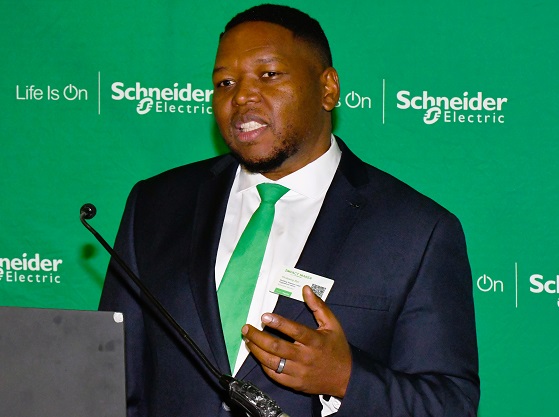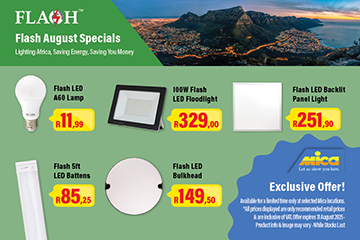Today, advanced technologies such as Building Management Systems (BMS), Uninterruptible Power Supplies (UPS), and integrated workspace management software can greatly improve energy efficiency and ensure continuous supply. Unfortunately, these technologies can become quite costly, and businesses struggle to balance operational efficiency with sustainability goals.

Enter Energy Efficiency as a Service (EEaaS). Similar to its older sibling, Energy as a Service (EaaS), EEaaS operates as a subset, focusing primarily on reducing energy consumption through upgrades like efficient lighting, HVAC systems, and insulation, explains Thabang Byl, Buildings segment lead at Schneider Electric.
“In South Africa, EEaaS provides the opportunity to make some quick cost-saving gains while also reducing their carbon footprint. Indeed, in a country perpetually facing rising energy costs and supply challenges, EEaaS is not only good for the environment but also for business,” said Byl.
EEaaS at work
Taking a closer look at EEaaS, like EaaS, it shifts the financial burden from capital expenditure (CapEx) to operational expenditure (OpEx). This allows commercial property managers and owners to retrofit existing facilities with energy-efficient solutions and monitoring technology without the need for upfront costs.
Also, by partnering with specialised service providers, organisations can access ongoing support, analytics, and maintenance, ensuring optimal operation of their systems. Again, like other ‘As-a-Service’ models, its results in a sustainable strategy that drives significant cost savings and operational efficiency while allowing businesses to focus on their core activities, explained Byl.
Models of flexibility
Looking at As-a-Service (AaS) models such as Software-as-a-Service (SaaS) and Everything-as-a-Service (XaaS), it has seen significant global success and adoption across industries.
In fact, the global XaaS market continues to expand at quite a pace, driven by the flexibility and scalability of these models. In a recent Accenture survey, 85% of executives cited AaS models complement existing revenue streams.
“Like many AaS models, the successful implementation of EEaaS often relies on the backing of financiers to ensure the scalability and sustainability of these initiatives,” said Byl.
These institutions play a crucial role in providing the necessary capital, structured as operational expenditure, to facilitate the widespread adoption of energy-efficient technologies. This collaboration not only mitigates financial risks for businesses but undoubtedly accelerates the transition towards a more sustainable energy future.
Schneider Electric offers a comprehensive EEaaS model designed to enhance energy resilience, sustainability, and efficiency without necessitating upfront capital investment. Key features include:
- Customised solutions: tailoring energy management services to meet specific organisational goals, such as reducing carbon footprints or enhancing energy reliability.
- No upfront costs: allowing customers to avoid capital expenditures by opting for predictable monthly payments.
- Integration with renewables: incorporating renewable energy sources like solar and battery storage to enhance sustainability.
- Risk mitigation: managing the entire process, from planning to implementation, thereby reducing financial and operational risks for customers.
- Microgrid technology: implementing microgrids to provide decentralised energy solutions, improving resilience and reducing costs.





